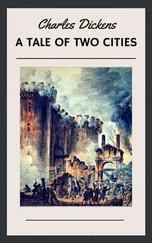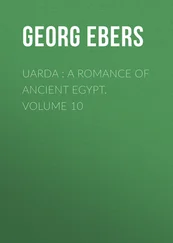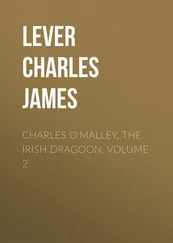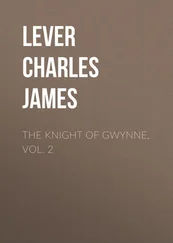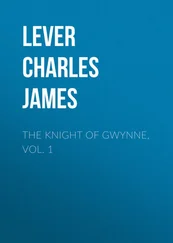Charles Bucke - Ruins of Ancient Cities (Vol. 2 of 2)
Здесь есть возможность читать онлайн «Charles Bucke - Ruins of Ancient Cities (Vol. 2 of 2)» — ознакомительный отрывок электронной книги совершенно бесплатно, а после прочтения отрывка купить полную версию. В некоторых случаях можно слушать аудио, скачать через торрент в формате fb2 и присутствует краткое содержание. Жанр: foreign_antique, foreign_prose, на английском языке. Описание произведения, (предисловие) а так же отзывы посетителей доступны на портале библиотеки ЛибКат.
- Название:Ruins of Ancient Cities (Vol. 2 of 2)
- Автор:
- Жанр:
- Год:неизвестен
- ISBN:нет данных
- Рейтинг книги:4 / 5. Голосов: 1
-
Избранное:Добавить в избранное
- Отзывы:
-
Ваша оценка:
- 80
- 1
- 2
- 3
- 4
- 5
Ruins of Ancient Cities (Vol. 2 of 2): краткое содержание, описание и аннотация
Предлагаем к чтению аннотацию, описание, краткое содержание или предисловие (зависит от того, что написал сам автор книги «Ruins of Ancient Cities (Vol. 2 of 2)»). Если вы не нашли необходимую информацию о книге — напишите в комментариях, мы постараемся отыскать её.
Ruins of Ancient Cities (Vol. 2 of 2) — читать онлайн ознакомительный отрывок
Ниже представлен текст книги, разбитый по страницам. Система сохранения места последней прочитанной страницы, позволяет с удобством читать онлайн бесплатно книгу «Ruins of Ancient Cities (Vol. 2 of 2)», без необходимости каждый раз заново искать на чём Вы остановились. Поставьте закладку, и сможете в любой момент перейти на страницу, на которой закончили чтение.
Интервал:
Закладка:
This hall, travellers suppose to be the precise part, which formed the banqueting-hall where Alexander displayed his triumph; the place where the kings of Persia received the homage of their subjects, displayed their magnificence, and issued their beneficent orders; also the private palace which was appropriated to the domestic intercourse of the members of the royal family.
Sir Robert Porter says that he gazed at the ruins with wonder and delight. “Besides the admiration which the general elegance of their form, and the exquisite workmanship of their parts excited,” says he, “I never was made so sensible of the impression of perfect symmetry, comprising also in itself that of perfect beauty.”
Mr. Morier says, that on one of the highest columns is the remains of the sphinx, so common in all the ornaments of Persepolis; that he could distinguish on the summit of every one a something quite unconnected with the capitals; so that the high columns have, strictly speaking, no capitals whatever, being each a long shaft to the very summit on which the sphinx rests. The capitals, he continues, of the lower columns are of a complicated order, composed of many pieces. There are also three distinct species of base.
Deslandes imagined, that these columns never supported a roof, but idols: on which Porter says, “I am not aware of a precedent in any idolatrous country, for such a wilderness of gods as we should have found assembled here in effigy; and, least of all, could we expect to find such extravagant proofs of polytheism in a palace, that appears to have owed its origin to the immediate ancestors of Cyrus, the simple worshippers of Mithra, or the sun; and the proudest decorations of which may be dated from Darius, the follower of the philosophic Zoroaster, whose image, the god of his idolatry, is nothing grosser than the element of fire. To suppose these pillars to have been the supports of commemorating statues to the honour of the heroes of Persia, seems equally untenable; for it is not in absolute monarchies, as in republics, or in commonwealths, where kings form only one great member of the body politic, that the eminent warriors and worthies of the land have such monuments erected to them. In Persia we find the bas-reliefs of its kings and their attendants on the walls of its palaces; in Rome we find the statues of Brutus, and Cato, and Cicero, under the ruins of the forum.”
In regard to the magnificent colonnade, which occupies the terrace, “the imagination,” says Mr. Fraser, “cannot picture a sight more imposing than those vast, solitary, mutilated pillars, which, founded in an age beyond the reach of tradition, have witnessed the lapse of countless generations, and seen dynasties and empires rise, flourish, and decay, while they still rear their grey heads unchanged.”
“On ascending the platform, on which the palace of Chehelminar once stood,” says Porter, “nothing can be more striking than the view of its ruins: so vast and magnificent, so fallen, mutilated and silent; the court of Cyrus, and the scene of his bounties; the pavilion of Alexander’s triumph, and, alas! the awful memorial of the wantonness of his power. But every object, when I saw it, was beautiful as desolate; amidst the pleasing memories of the past, awakening poignant regret, that such noble works of ingenuity should be left to the desert alone; that the pile of indefatigable labour should be destined, from the vicissitudes of revolution, and the caprice, ignorance, or fanaticism of succeeding times, to be left in total neglect; or, when noticed, doomed to the predatory mallet, and every other attack of unreflecting destruction.”
One of the most remarkable features of these ruins are the beds of aqueducts which are cut into the solid rock. The great aqueduct is discovered among a confused heap of stones, almost adjoining to the ruined staircase. In some places it is so narrow, that a man is obliged to crawl through; in others it enlarges, so that he can stand upright in it.
Sir William Ouseley says, that he did not perceive among these monuments of antiquity, which the Takht exhibits: 1, any object appearing to be a vestige of the Arsacidan kings; 2, nor any vestige of the Sassanian dynasty, except two inscriptions; 3, nor any representation of a crooked sword; 4, nor any human figure with a full face; 5, nor any human figure mounted on horseback; 6, nor any figure of a woman; 7, nor any sculpture representing ships, or alluding to naval or marine affairs; 8, nor any arches; 9, nor any human figure sitting cross-legged, or resting on the knees and heels, according to modern usage in Persia; 10, nor any human figure in a state of nudity; 11, nor any vestiges either of wood or of brick; 12, nor any remains of gilding; 13, nor any insulated statue, or sculptured figure, separated from the general mass of marble, and showing in full relief the entire form of any object. Nor did he see any figure, that has ever actually been an object of idolatrous veneration. “The reader will easily believe,” says Sir William, “this catalogue of negative remarks might have been considerably augmented, when he considers the great extent of these stupendous ruins; the seeming anomalies of their plan; the extraordinary style of their architecture; the labyrinths or narrow passages, which have been excavated with much art in the adjacent mountains, and of which no traveller has yet ascertained either the termination or the mysterious design; the multiplicity of ornamental devices in the ruins; and, above all, of the human figures which their sculptures exhibit.
“That I have not exaggerated the wonders of Jemsheed’s throne,” continues this accomplished traveller and scholar, “will be evident, on a reference to the accounts, given by most respectable persons of various countries, who, in different ages, have visited its ruins. Not only youthful travellers, glowing with lively imaginations; but those of sober judgment, matured by the experience of many years, seem, as they approach the venerable monuments, to be inspired by the genius of Eastern romance; and their respective languages scarcely furnish epithets capable of expressing with adequate energy the astonishment and admiration, excited by such a stupendous object.” The learning, which Sir William has expended upon Persepolis and other cities of the East, is astonishing.
In regard to a portion of a platform, another traveller says: – “To me it seemed to tell its own story; lying like the buried body of the last Darius under the ruins of his capital, and speaking with a voice from the grave; crying, in the words of Euripides over the like desolation; ‘Oh woe, woe, woe! my country lost! and thou, boast of my noble ancestors, how art thou shrunk; – how art thou vanished!’”
There are no appearances now either of a city, or a citadel, in any direction, about Persepolis. Three quarters of a mile from Persepolis is the tomb of the Persian hero, Rustum; – four chambers hollowed out in the rock, adorned with the altar of fire, the sun, and a mystic figure. Under the sculpture of the second chamber is a gigantic equestrian figure, very perfect, with others kneeling before him, and seeming to seize his hand. On one side of this is an inscription in ancient characters, different from those at Persepolis.
A little to the north, at the foot of the rock, are two more figures of horsemen contending for a ring, and under the horses’ feet two human heads, besides other attendants. Both these horses are called Rustum, whose tomb is shown near the foot of the rock, – a square building, of blue stone, twenty feet high, with windows and niches.
In part of the rock to the east is a mutilated equestrian figure, with a horn on the left side of his forehead, called Iskunder zu el Kemeen, or Alexander, Lord of horns 87 87 In allusion to the horns of Jupiter Ammon.
.
Интервал:
Закладка:
Похожие книги на «Ruins of Ancient Cities (Vol. 2 of 2)»
Представляем Вашему вниманию похожие книги на «Ruins of Ancient Cities (Vol. 2 of 2)» списком для выбора. Мы отобрали схожую по названию и смыслу литературу в надежде предоставить читателям больше вариантов отыскать новые, интересные, ещё непрочитанные произведения.
Обсуждение, отзывы о книге «Ruins of Ancient Cities (Vol. 2 of 2)» и просто собственные мнения читателей. Оставьте ваши комментарии, напишите, что Вы думаете о произведении, его смысле или главных героях. Укажите что конкретно понравилось, а что нет, и почему Вы так считаете.


